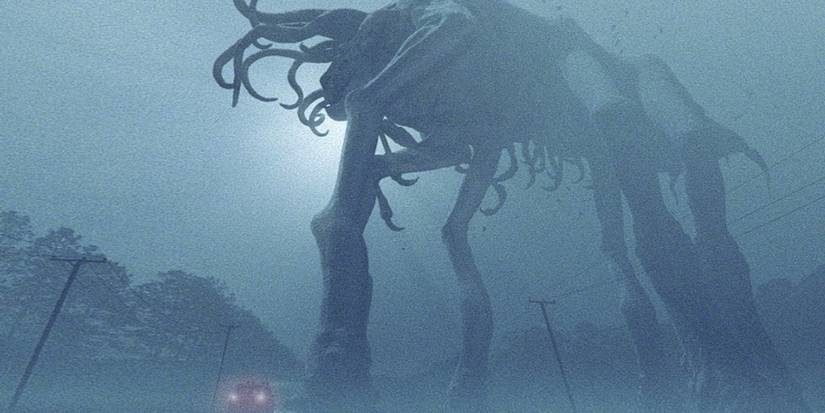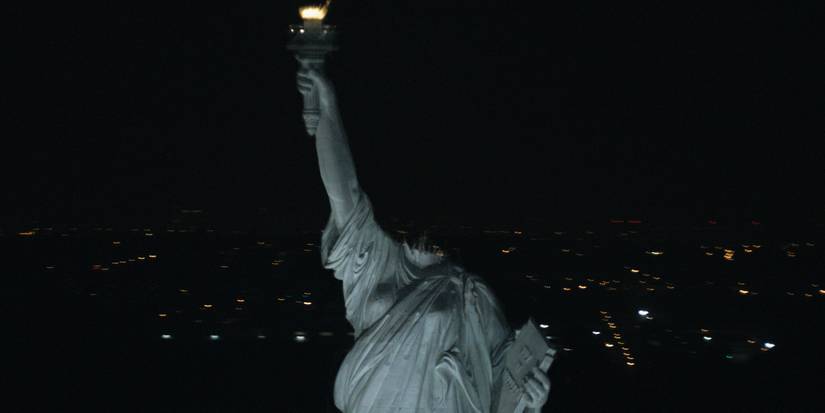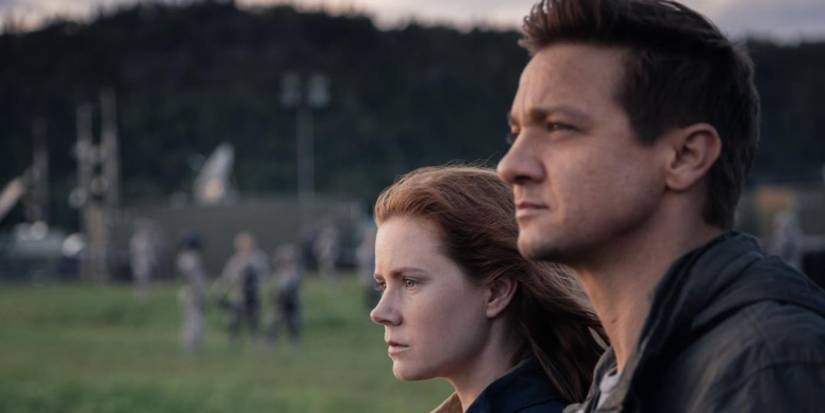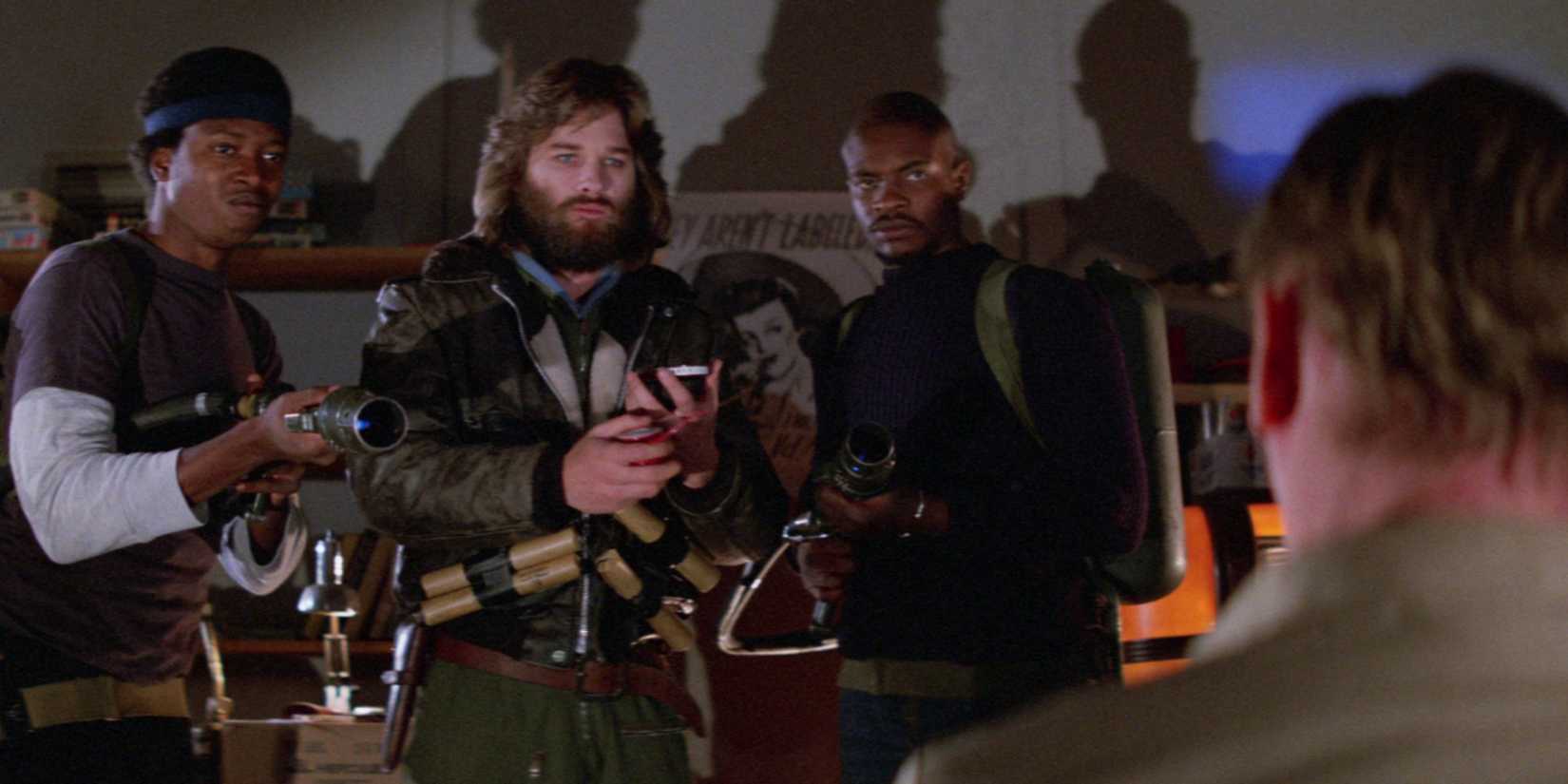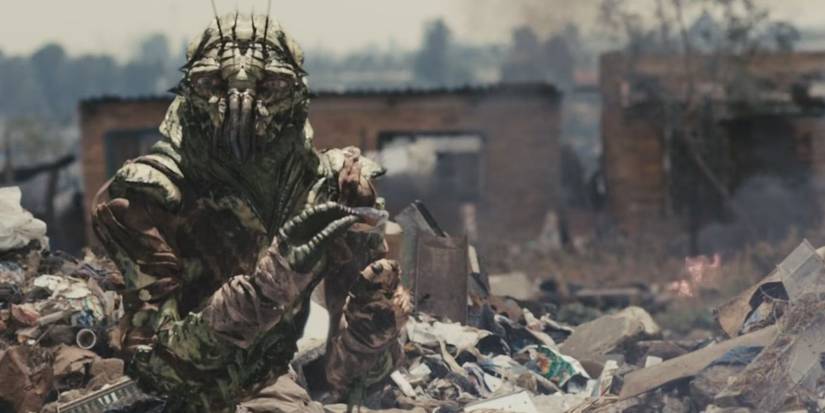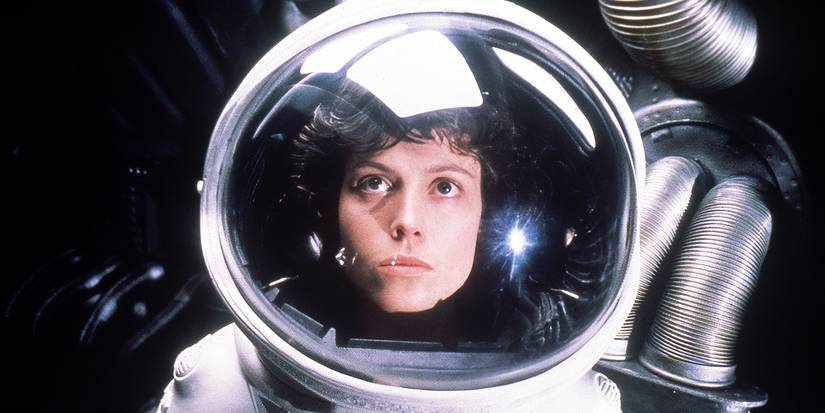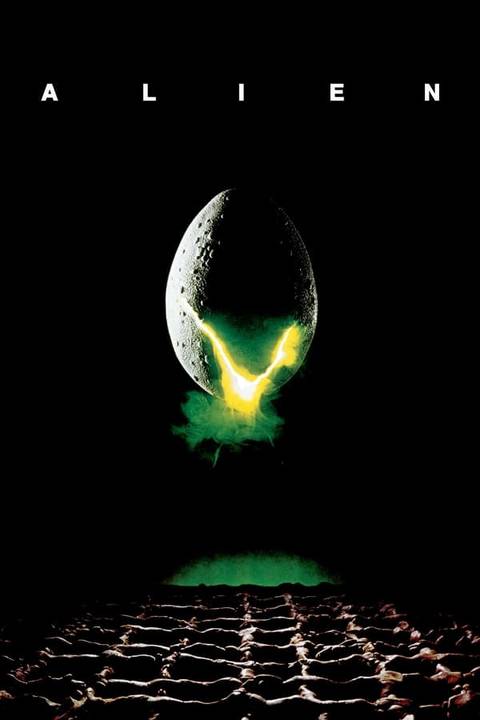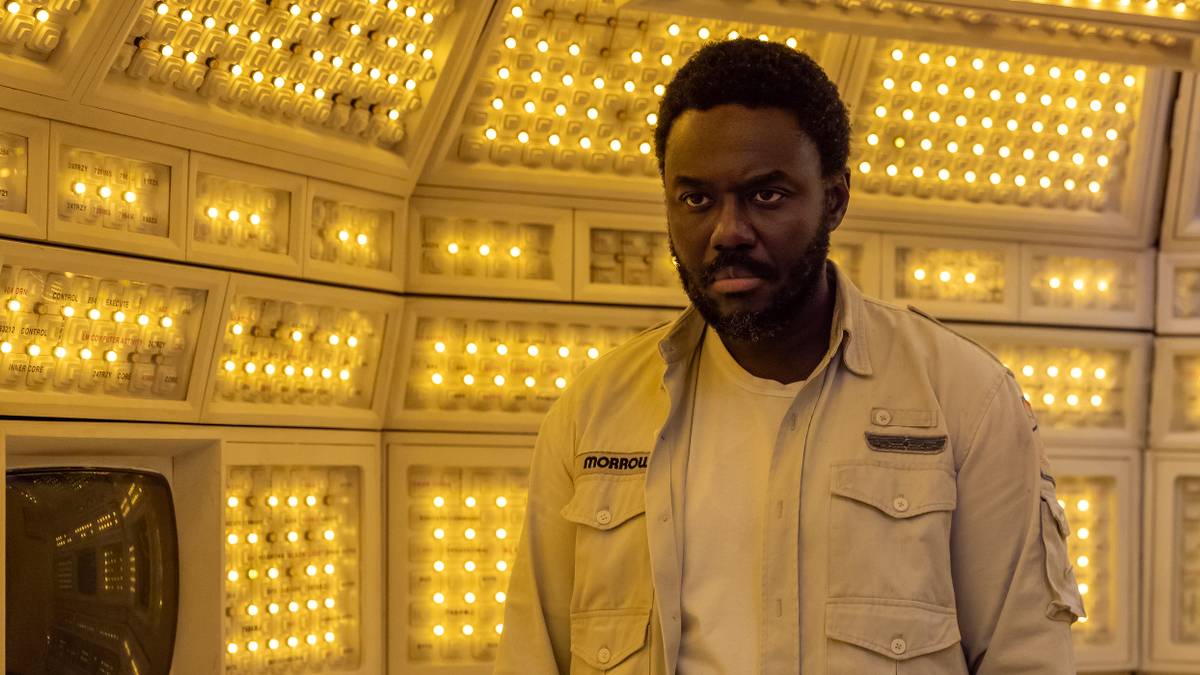
10 Gripping Sci-Fi Movies To Watch If You Love ‘Alien: Earth’
With the arrival of Alien: Earth, the first series in the Alien franchise, there’s been a reawakened love for subdued and terrifying science fiction. Though the enthusiasm for such things rarely diminishes, Noah Hawley‘s series reminded people about a part of sci-fi that blends survival horror with cosmic dread.
The show adds higher stakes with the addition of more alien species, intensified hubris of humans, and increased curiosity about our and other worlds. If you’re particularly fond of science fiction that covers all that, you can watch these movies after you’re done with Alien: Earth. They’re classics and future classics, cult films, and defining for the times they came out in.
1
‘The Mist’ (2007)
The Mist is Frank Darabont‘s adaptation of Stephen King‘s famous novella, and while it’s technically not about aliens, it is about otherworldly, Lovecraftian monsters reminiscent of some of the species we can see in the show. The Mist garnered critical praise and enough box office revenue to be considered successful, but it’s still considered an underrated piece of survival horror/sci-fi. It’s a cult film nowadays, and while King’s fans may not always like adaptations of his work, The Mist generally gets a pass because it’s terrifying and grounded.
The Mist is set in a small Maine town called Bridgton, and the protagonist is artist David (Thomas Jane) who, alongside his 8-year-old son Billy and several other townies, hides in a supermarket after a mysterious and deadly mist descends on the town. Sometimes, insect-like creatures come out of the mist, but they’re giant and menacing, with some people believing it to be divine retribution. The Mist possesses an uncomfortable, almost suffocating paranoia, where trapped survivors fight each other as much as they fear the monsters outside. It’s a must-watch for fans of cosmic menace, but it’s a pretty bleak film overall—faithful to King’s works.
2
‘Cloverfield’ (2008)
Kaiju-scale terror is hard to find outside the Godzilla franchise, but the creators of Cloverfield managed to make a movie so terrifying and memorable that it’s often deemed among the best sci-fi horrors ever made. This is a classic by now, considering it’s nearly 20 years old (yes, time flies), but plenty of us remember the first time we laid eyes on Cloverfield and its found footage horrors. It’s innovative because it introduces a different type of found footage film, escalating it from typical paranormal horrors and jumpscares to a large-scale, street-view alien invasion.
Cloverfield is set on one April evening in 2008, and seen primarily from the video camera footage that Rob (Michael Stahl-David) took. The camcorder is recovered by the Department of Defense, who watch it to understand what happened that night in New York City. Rob films some parts of the party thrown in his honor, until a massive earthquake happens and people start fleeing a yet unseen, massive threat destroying the city. The found footage perspective increases the feeling of helplessness, while the relentless chaos seen through a familiar camcorder lens, feels overwhelming.
3
‘Under the Skin’ (2013)
Under the Skin is Jonathan Glazer’s eerie art-horror about aliens living among people, in particular one; wearing the skin of a woman, played by Scarlett Johansson, the alien seduces men and then consumes them. The alien also wanders through the world, examining her own body and features while also observing others; this makes it seem like the alien is gathering intelligence for their race or kind. While in the skin of a human, the alien uncovers empathy, danger, silent communication, and self-compassion.
The movie can also be interpreted as being an alien in the sense of immigrating to one country from another, and the fact that the alien chooses to be a woman forces it to experience the dangers of human urges over women. Under the Skin shares a lot with Alien: Earth, even if it doesn’t seem like it. Both share a fascination with alien species, which are presented as predatory; they also share a female protagonist finding themselves in an unknown, foreign body form, rising up to self-discovery. Minimalism can be unsettling, and Under the Skin demonstrates that beautifully.
4
‘Life’ (2017)
Though Life was received with some mixed feelings, it’s also been dubbed as “Alien for a new generation.” Life introduces an examination of alien life and its consequences almost instantly; it’s set on a space station, too, so there’s no escape—confined-space horror at its best. The discovery of aliens in Life is very brutal and intense, and the movie starts off on a violent foot almost immediately. Fans of Alien: Earth will appreciate the gut punch ending of this movie, as well as the intelligent, unbeatable alien species that makes the humans regret the day they discovered it.
Life stars Jake Gyllenhaal, Rebecca Ferguson, Hiroyuki Sanada, and Ryan Reynolds; their ISS station takes an unmanned pod arriving with soil samples from Mars to Earth’s orbit. When they open the pod, they find an alien organism that multiplies and evolves rapidly. Naming the organism Calvin, the crew underestimates its agility and intelligence, and Calvin wreaks havoc on the ISS. This is similar to how the alien species cause chaos in Alien: Earth, in particular the bottle episode about the Weyland-Yutani science vessel, the Maginot.
5
‘Arrival’ (2016)
Arrival is another slow-burn, but it’s one of the greatest sci-fi films ever made, and often pitted against other Denis Villeneuve films for the flattering title of his best work. Arrival was based on the short story called Story of Your Life by Ted Chiang, and stars Amy Adams and Jeremy Renner; it’s intelligent and devastating, posing the question: “If you knew the events of your life from beginning to end, would you change them?” There’s not much combat or action, but it represents communication as a tool, much like Wendy uses in Alien: Earth to bond with Xenomorphs.
Arrival is set in an unspecified time, when several oval, black spacecrafts appear hovering over various places on Earth. One of the places is America, and the U.S. Army recruits various experts to examine the vessels, including linguist Louise Banks (Adams) and physicist Ian Donnelly (Renner). Louise and Ian approach the alien pods from a scientific perspective, and the more they learn about them, Louise begins seeing the world from a different point of view. The alien life forms present a force beyond human comprehension; adopting an aggressive stance rather than a curious one hurts rather than helping. Like Wendy in Alien: Earth, Louise understands this in Arrival, too.
6
‘The Thing’ (1982)
John Carpenter‘s The Thing is a cold nightmare and the gold standard for paranoia and body horror. The closest thing to The Thing in Alien: Earth would be the Ocellus as a vessel for body horror; both Ocellus and the alien in The Thing take over a person and have the ability to hide in plain sight. This causes a loss of autonomy and independence over one’s body, which is ultimately the most terrifying part of it all. Both also examine trust and camaraderie in the face of the unknown, questioning motivations rather than abilities; in both, “trust no one” is the parable to follow, even when it’s detrimental.
The Thing is set in Antarctica and follows the scientists of the American research station; their helicopter pilot, RJ MacReady (Kurt Russell) witnesses mayhem in the Norwegian station and descends on it to find out what happened. MacReady returns to realize they’ve brought in a shapeshifting alien that consumes other organisms, but it hides so well that you don’t know until it’s too late. The movie becomes a game of Clue, in a way, with the group deciding in their own ways who to trust.
7
‘Prometheus’ (2012)
Prometheus was the first of Ridley Scott‘s returns to the Alien franchise after a while, and it was also the first prequel in that universe. It’s divisive and imperfect, but ultimately beautiful, grandiose, and a brilliant way to reintroduce the Alien lore without recycling old ideas and premises as much. Prometheus was praised for its visual appeal and cinematography, and considering its mythical lore, it’s one of the more interesting installments in the franchise. Since Alien: Earth is also a prequel, these two share that unique bond; they also introduce questions of humanity and grotesque alien encounters, making them spiritual siblings.
Prometheus follows the crew of the Weyland Corporation’s scientific vessel Prometheus, as they embark on a trip to space to follow the coordinates of star maps they found in Scotland. The leaders of the expedition are archaeologists Elizabeth Shaw (Noomi Rapace) and Charlie Holloway (Logan Marshall-Green), and they’re joined by several crew members, including a Synth named David (Michael Fassbender). A lot of weird stuff happens, there’s action, discovery, curiosity, and mayhem, much like in the series.
8
‘District 9’ (2009)
It seems that Prodigy’s founder in Alien: Earth, Boy Kavalier (Samuel Blenkin), wanted to achieve something similar to what they did in District 9—to conquer alien species and subdue them in order to examine and exploit them for personal benefit. In District 9, Neill Blomkamp’s feature film debut, aliens are refugees and the film embeds sci-fi into social commentary. It’s gritty, politically charged, and makes the humans often more terrifying than the bug-like creatures from outer space. This echoes the sentiment of Alien: Earth, where humans express an urge to exert control over machines, aliens, and other people.
District 9 is set in Johannesburg, South Africa (Blomkamp’s hometown) and shows the arrival of starved aliens to Earth. They are placed in a colony outside of town called District 9, and their existence causes problems for the locals. When a famous contractor company sends Wikus van de Merwe (Sharlto Copley) to oversee the relocation of the problematic District 9, the weakly bureaucrat experiences the struggle of alienation firsthand. The movie is shot in a mockumentary style and is action-packed, a perfect follow-up to Alien: Earth.
9
‘Annihilation’ (2018)
Annihilation is Alex Garland‘s hallucinatory sci-fi masterpiece, and it blends ecological themes with body horror and invasive alien biology. It’s a trippy psychological horror that examines the unknown, but also delves into themes of self-destruction and grief. While Alien: Earth doesn’t have mutating nature, it does possess elements of psychological and body horror with the alien species introduced in it; they mutate human biology, shift it to their will, and possess the body completely, leaving it powerless in the face of their ways of survival and growth.
Annihilation was based on the book of the same name by Jeff Vandermeer, who wrote it as the first part in his Southern Reach series. Annihilation follows a group of female scientists from various fields, with Lena (Natalie Portman) as the protagonist of the story. The crew enters a biologically altered area with alien life called the Shimmer, in an attempt to retrieve the bodies of the previous expeditions that went into the Shimmer but never returned. Diving straight into the unknown is a great central point for Alien: Earth, too; despite revolutionary discoveries, the alien life forms aren’t to be toyed with.
10
‘Alien’ (1979)
Maybe you expected something else here, but the obvious crown jewel has to be Alien. The original and the irreplaceable Alien by Ridley Scott remains the blueprint; a fragile crew venturing into the unknown, finding deadly, inexplicable creatures and lifeforms in space, and getting annihilated when they become bold enough to believe they can defeat the aliens. Here’s when we first see the Xenomorphs, who became sci-fi canon after the first film, and the synonym for the entire franchise. The massive monsters represent things we can’t understand, and the crew’s fight against them is the core of human resilience.
Alien is set two years after the events of Alien: Earth, on the Nostromo, a commercial space vessel containing seven crew members, among whom is warrant officer Ellen Ripley (Sigourney Weaver). When their ship’s computer, called Mother, intercepts a signal from a nearby planet, the Nostromo crew heads out to examine it themselves, but end up with an eighth passenger instead—a fully grown Xenomorph. Alien is undoubtedly the most influential sci-fi horror film of all time, and Alien: Earth succeeds in replicating its atmosphere while adding some novelty to the story. If the show left you shaken, Alien will remind you where it all began.

